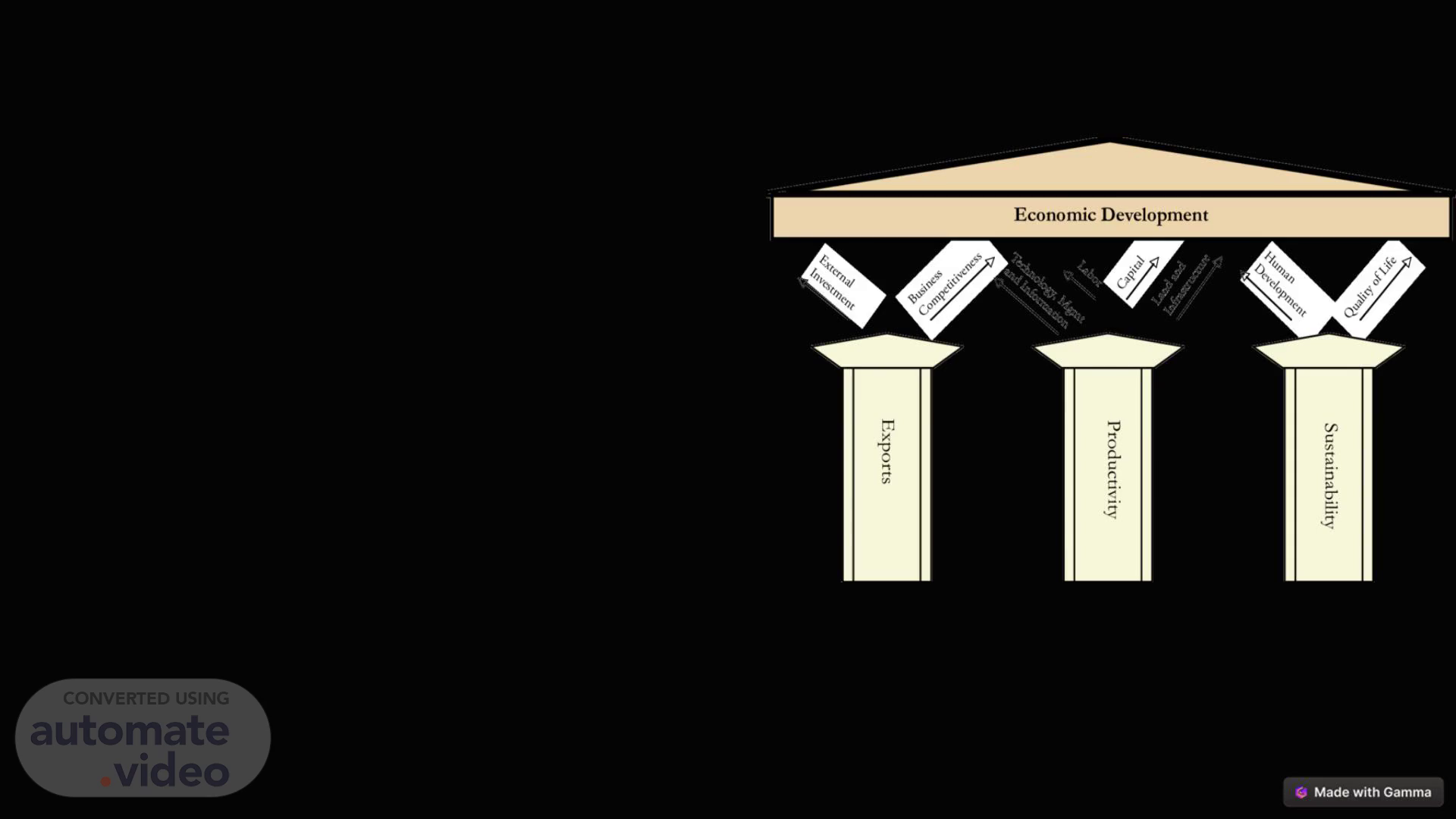Scene 1 (0s)
[Audio] Economic development is a complex and multifaceted process that involves various factors, such as productivity, exports, and sustainability. As we explore this topic, we will examine the key trends, challenges, and strategies that shape the ever-changing landscape of global economies..
Scene 2 (17s)
[Audio] The primary sector provides raw materials essential for the production of goods and services through agriculture, mining, and forestry. The secondary sector transforms these raw materials into finished products, contributing to national output and employment through manufacturing, construction, and utilities. Meanwhile, the tertiary sector focuses on providing services to individuals and businesses, driving economic growth and employment through finance, healthcare, education, and tourism..
Scene 3 (45s)
[Audio] National income is the total value of goods and services produced by a nation, encompassing various forms of income such as wages, profits, and rents. This comprehensive measure provides a broad picture of a country's economic activity, allowing policymakers to assess its overall performance and make informed decisions..
Scene 4 (1m 6s)
[Audio] Technological innovation drives economic transformation through automation, digitalization, and research and development. This leads to increased efficiency, productivity, and competitiveness. To foster economic prosperity, policy interventions are necessary, including fiscal policy, monetary policy, trade policy, investment policy, and human capital development. These policies promote inclusive growth, reduce poverty, and ensure a brighter and more prosperous world for all..
Scene 5 (1m 39s)
[Audio] Increased international trade has opened up new markets and expanded economic opportunities, allowing businesses to reach a broader customer base and expand their operations. Foreign direct investment has brought in capital, technology, and expertise, boosting economic growth and creating new jobs. However, increased competition from foreign companies has challenged domestic firms and industries, forcing them to adapt and innovate to remain competitive..
Scene 6 (2m 7s)
[Audio] Economic problems emerge due to a scarcity of job opportunities for willing and able workers, causing unemployment, which detrimentally affects economic output and social well-being. Moreover, persistent rises in the general price level of goods and services, referred to as inflation, diminish purchasing power and hinder businesses from planning for the future. Furthermore, poverty and inequality persist, resulting in a shortage of fundamental necessities and resources, encompassing food, shelter, healthcare, and education. These concerns necessitate consideration and effective remedies to guarantee a stable and prosperous economy..
Scene 7 (2m 46s)
[Audio] Fiscal policy involves government decisions regarding spending and taxation to influence economic activity. This includes measures such as increasing public expenditures to boost demand, reducing taxes to stimulate consumption, and implementing targeted subsidies to support specific industries. Monetary policy, on the other hand, focuses on central bank actions like adjusting interest rates and controlling the money supply to combat inflation and promote economic growth. Trade policy encompasses regulations governing international commerce, including tariffs, quotas, and other restrictions designed to protect domestic industries or balance trade deficits. Investment policy aims to attract foreign capital by offering incentives, reducing regulatory barriers, and creating a favorable business environment. These policies significantly impact national economies and help address various economic challenges..
Scene 8 (3m 39s)
[Audio] Technological innovation has driven economic transformation by introducing automation, digitalization, and research and development. Automation enables the use of robots and artificial intelligence to perform tasks previously done by humans, increasing efficiency and productivity. Digitalization uses digital technologies to transform businesses and industries, creating new opportunities and improving existing ones. Research and development invests in new technologies and scientific breakthroughs, driving innovation and economic growth. These advancements have transformed the way we live and work, shaping the future of our economy..
Scene 9 (4m 16s)
[Audio] As we continue to strive for sustainable development, it's essential to recognize the importance of balancing growth with environmental considerations. This involves transitioning to clean energy sources, reducing carbon emissions, and combating climate change. Additionally, adopting a circular economy model helps minimize waste and promote resource efficiency, ultimately contributing to a more sustainable future..
Scene 10 (4m 43s)
[Audio] By embracing innovation, promoting inclusivity, and fostering sustainable practices, we can create a future where economic growth and social progress go hand in hand, ensuring a brighter and more prosperous world for all..
Scene 11 (4m 58s)
THANKYOU.
